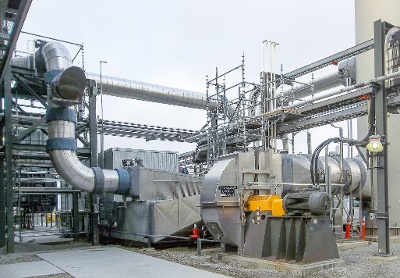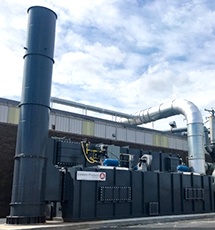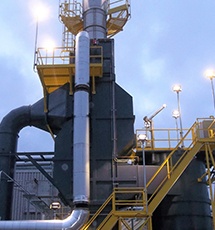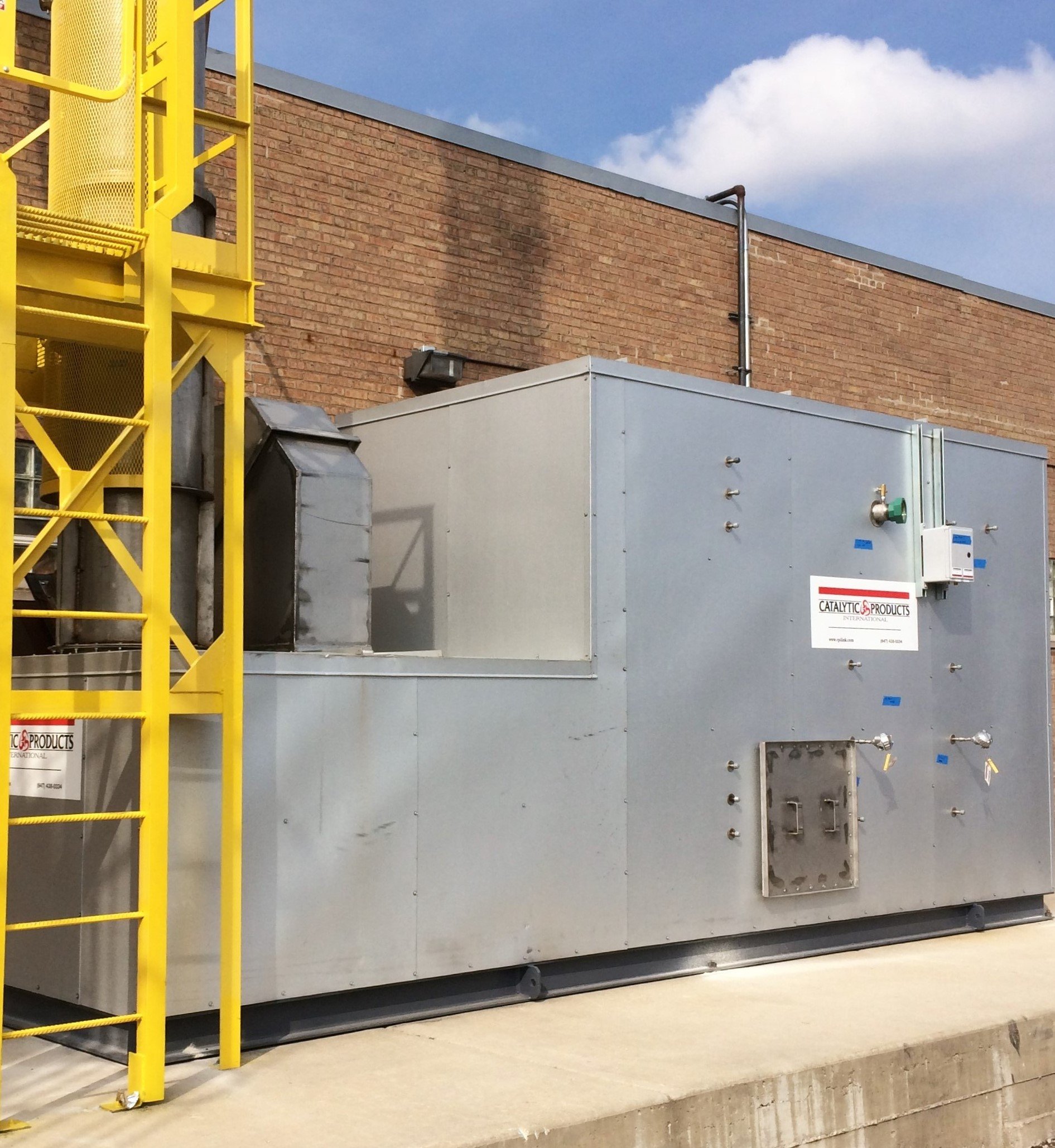Catalytic Products International (CPI) installed an 18,000 SCFM CONCORD Selective Catalytic Reduction (SCR) system for the abatement of Ammonia (NH3), Volatile Organic Compound (VOC), and Nitrogen Oxides (NOx) at a Midwest USA cellulosic ethanol producer.
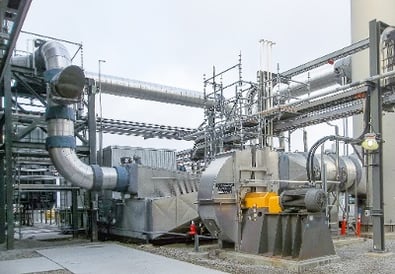
Ethanol is a renewable fuel made from various plant materials collectively know as "biomass", which ferments sugars into alcohol. It can be made from many different plant sources or feedstocks. Currently, corn is the most common feedstock in the United States. Cellulosic ethanol production starts with the biomass or plant materials and breaks down the cell wall to release the starch or sugars in the plants leaves and stems. These simpler compounds are then fermented into ethanol. In this process the biomass is pretreated using high heat and chemicals such as acids, bases or ammonia and then processed with enzymes and microorganisms. Finally, the ethanol is purified through distillation.
The CONCORD Selective Catalytic Reduction (SCR) System will control the exhaust gas from one (1) dryer and one (1) non-condensable stream from the distillation process during cellulosic ethanol production. The system will destroy VOC emissions with 98% destruction rate efficiency (DRE) and provide a 99% ammonia removal rate.
The system offers continuous ammonia & VOC removal across the operational range, minimal formation of nitrogen oxides (NOx), CEMs to monitor NOx in the discharge stack, the lowest overall cost of operation, and minimal maintenance requirements.
The CONCORD SCR Ammonia Reduction System process starts as the dryer off gas fume stream is drawn into a high efficiency primary heat exchanger where it increases in temperature by stripping waste heat from the cleaned exhaust gases. The preheated process air leaves the primary heat exchanger and passes into the burner preheat chamber. Here, the air passes through a low NOX burner assembly and then travels down the mixing chamber to assure temperature uniformity prior to the catalyst reactor section.
.jpg?width=300&name=CPI%20SCR%2018%2c000%20SCFM%20Oxidizer%20Side%20(1).jpg) When the stream enters the VOC catalyst bed, a catalytic reaction occurs and efficiently converts the ammonia (NH3) to nitrogen (N2) + nitrogen oxides (NOx) + water (H2O) and reduces the VOCs in the air stream by +98%. From there, the fume stream passes through the NOx reduction section of the oxidizer, converting any formed NOx to harmless nitrogen (N2), water vapor (H2O) and carbon dioxide (CO2). The cleaned hot gases then pass through the hot side pass of the primary heat exchanger and enter the induced draft booster fan. The booster fan exhausts into a free standing exhaust stack.
When the stream enters the VOC catalyst bed, a catalytic reaction occurs and efficiently converts the ammonia (NH3) to nitrogen (N2) + nitrogen oxides (NOx) + water (H2O) and reduces the VOCs in the air stream by +98%. From there, the fume stream passes through the NOx reduction section of the oxidizer, converting any formed NOx to harmless nitrogen (N2), water vapor (H2O) and carbon dioxide (CO2). The cleaned hot gases then pass through the hot side pass of the primary heat exchanger and enter the induced draft booster fan. The booster fan exhausts into a free standing exhaust stack.
CPI worked closely with the customer providing the design, supply and startup of the Ammonia and VOC Reduction System. The System is equipped with a primary heat exchanger, natural gas train, exhaust ducting and dampers, and exhaust stack.
CPI has been “Enabling Clean Production Since 1969” and continues as a leading supplier of air pollution control equipment. CPI is at the forefront in providing industries including the ethanol industry with solutions to their air pollution control needs.
Today, CPI partners with its customers as a trusted resource in resolving the most complex air pollution and energy conservation problems. We provide our customers with innovative and cost-conscious solutions to their most complex VOC, NOx, and Odor pollution challenges. Our equipment is also at work meeting energy conservation strategies and minimizing greenhouse gas (GHG) emissions.

